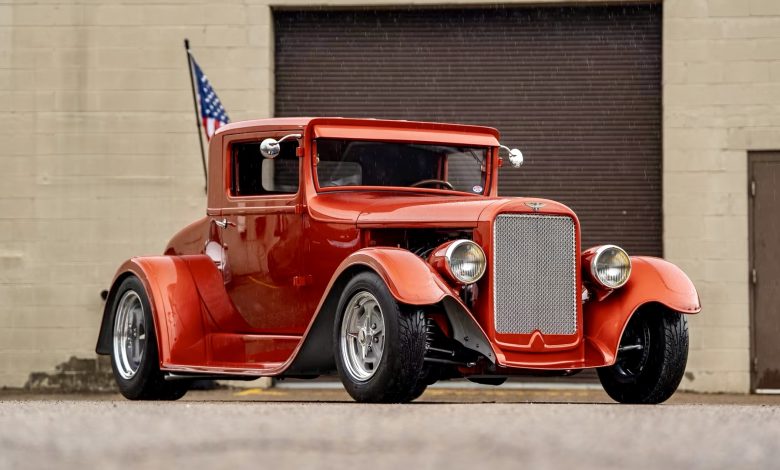
There’s custom, and then there’s this—a 1928 Dodge Brothers Standard Six 3-Window Coupe that’s been completely transformed into a HEMI®-powered street rod with the perfect blend of classic lines and modern performance. Crossing the auction block on Friday, May 16th at Mecum Indy 2025, this wild build is estimated to bring between $150,000 and $175,000—and once you see the details, that number starts to make a lot of sense.
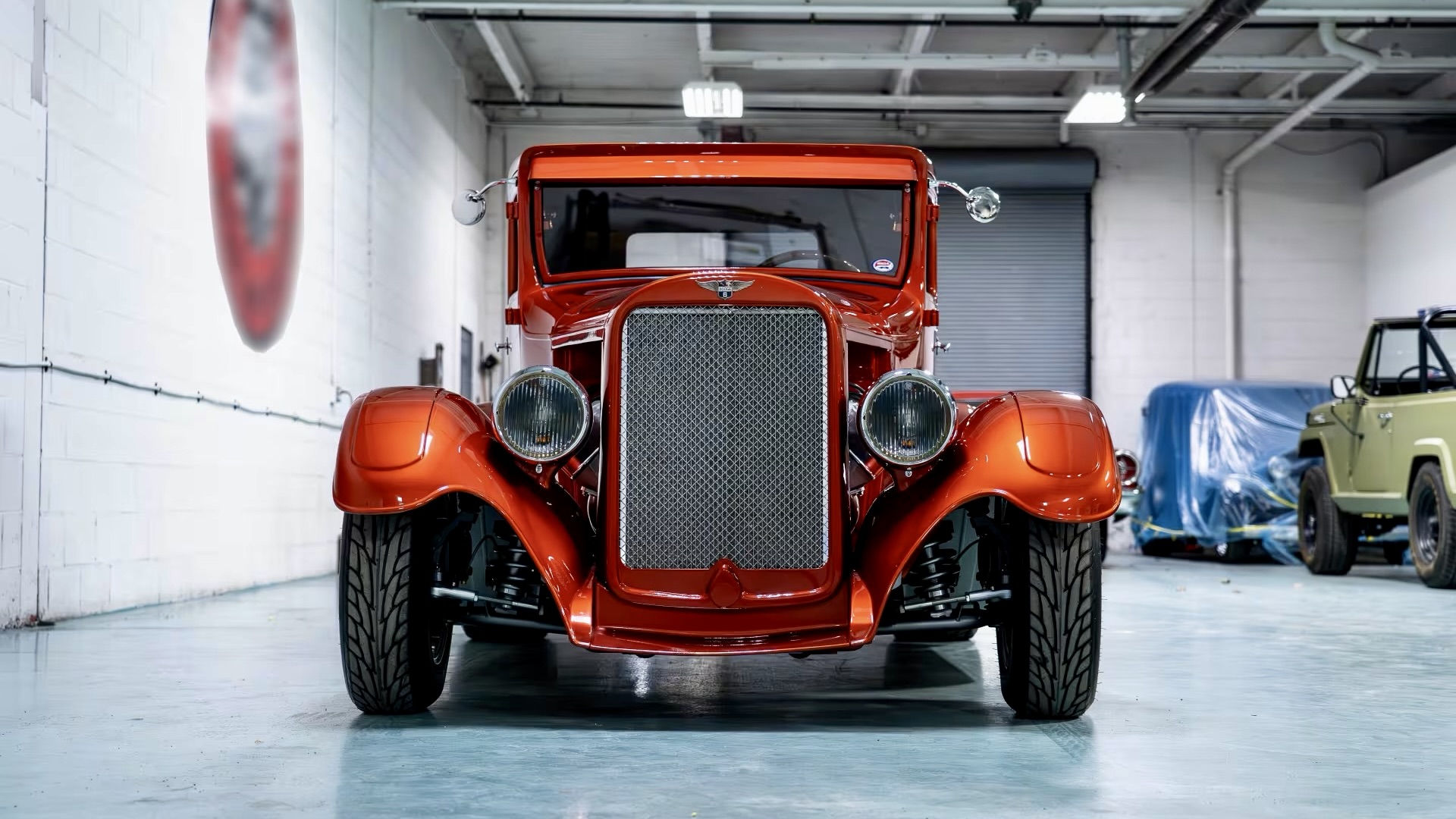
Originally built the year Dodge became a division of Chrysler, this coupe celebrates that turning point with Mopar power front and center. Under the hood is a fire-breathing 6.4-liter (392 cubic-inch) HEMI® V8 mated to a 46RH 4-speed push-button automatic transmission with overdrive. That power runs through a 9-inch rear end with 3.50 gears and stout 31-spline axles, meaning it can take the heat while cruising or launching off the line.
But the upgrades go way beyond the engine. The original frame has been boxed for strength, and the suspension setup is pure hot rod gold. A Heidts Mustang II front end with manual rack-and-pinion steering joins QA1 adjustable coilovers front and rear, a Chassis Engineering ladder bar, and Wilwood 4-wheel disc brakes. The master cylinder is tucked under the dash to keep the engine bay clean.
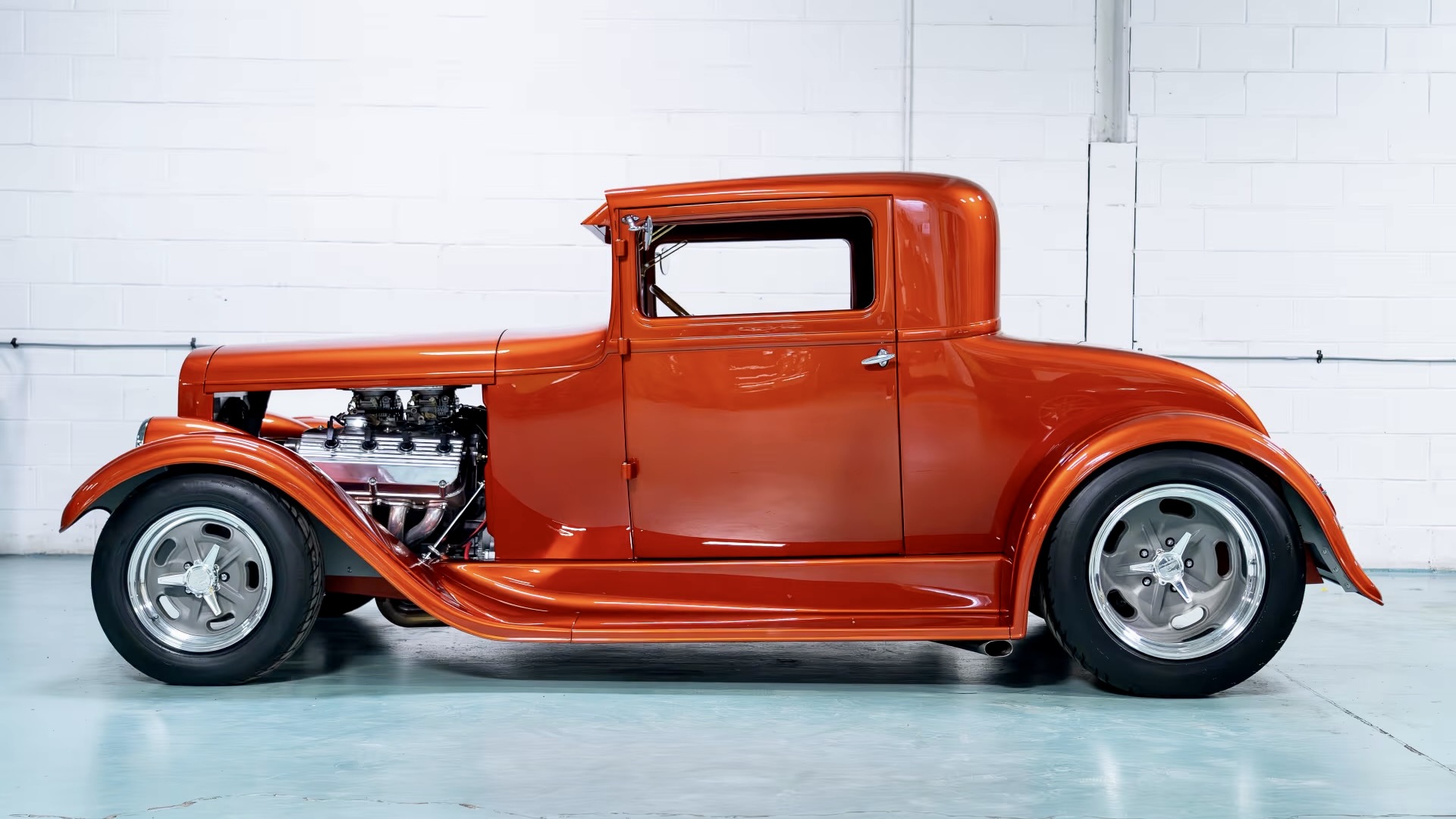
Visually, this thing turns heads from a mile away. It’s finished in a jaw-dropping Flame Orange Metallic paint job, and the body is loaded with cool touches—like a ribbed roof insert borrowed from a 2001 Pontiac Aztek, widened rear fenders, and Ford Vicky-style running boards. The body seams are all welded and leaded, keeping things true to classic hot rod craftsmanship.
Inside, the tan and brown interior is all about custom comfort. TEA’s Design Italian leather bucket seats give it a high-end touch, and there’s a hidden chromoly roll bar for safety. Power windows, a Bluetooth stereo, and Classic Instruments gauges bring modern convenience into the mix.
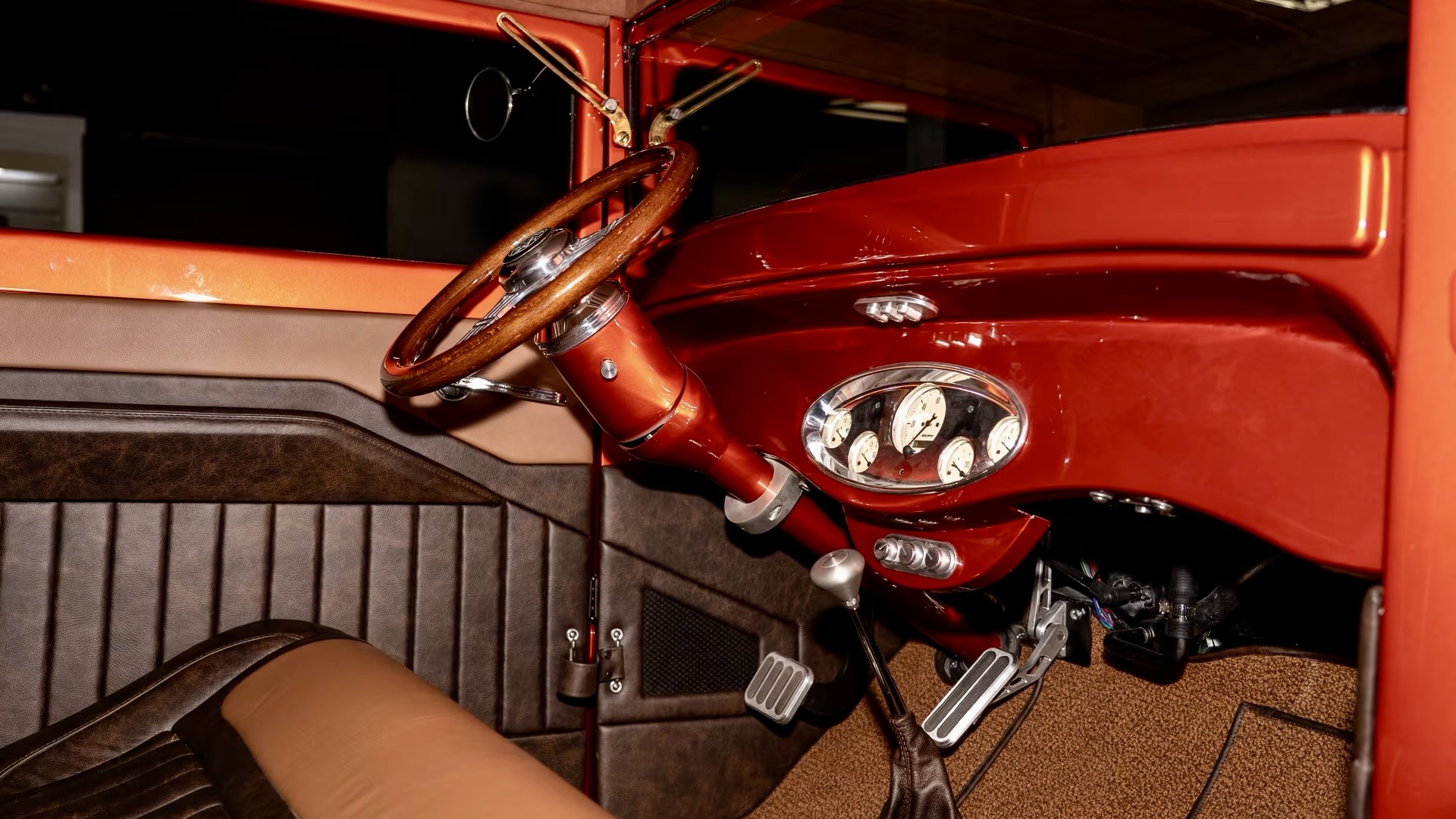
A set of 15-inch American Racing Salt Flat Special wheels with Mickey Thompson tires finish the look and keep it firmly planted on the pavement. You’ll also get clean underpinnings, a detailed chassis, and an unmistakable stance that screams “built right.”
This Dodge Brothers coupe is the perfect mix of heritage and horsepower. It pays homage to one of the most important transitional years in Dodge history—1928—while turning up the heat with modern Mopar muscle. If you want something rare, loud, fast, and unlike anything else at the show, this is it.

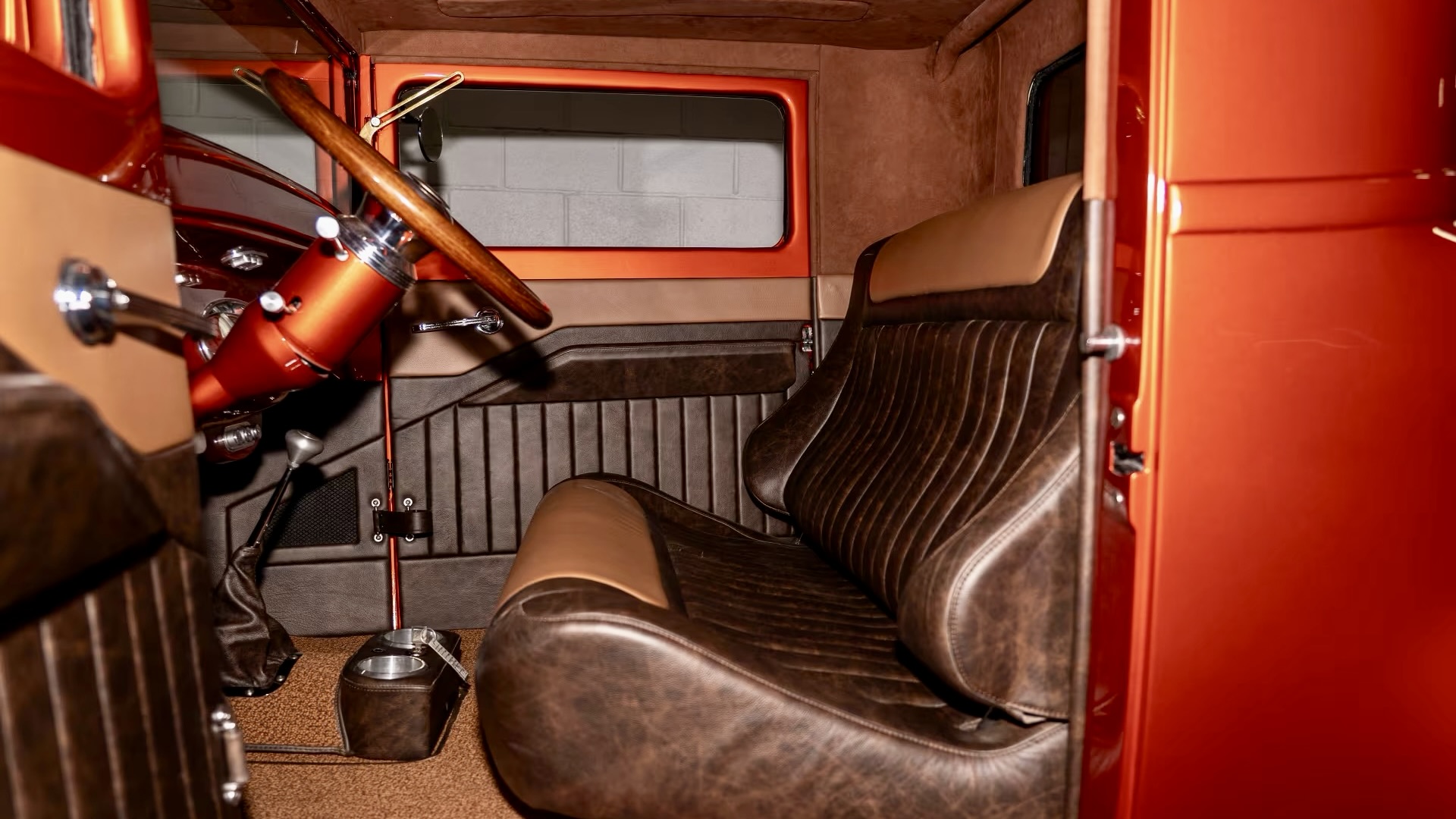

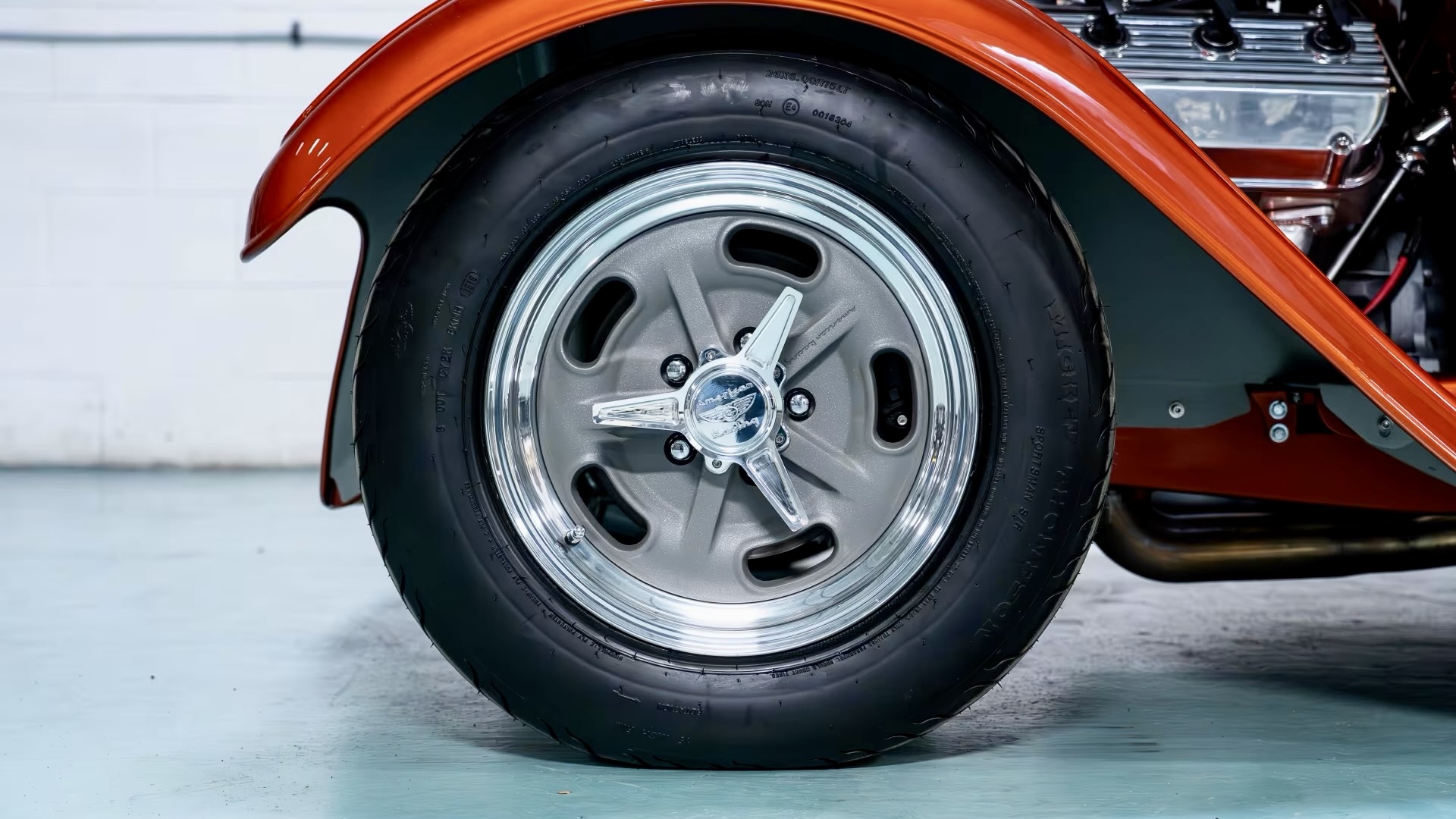
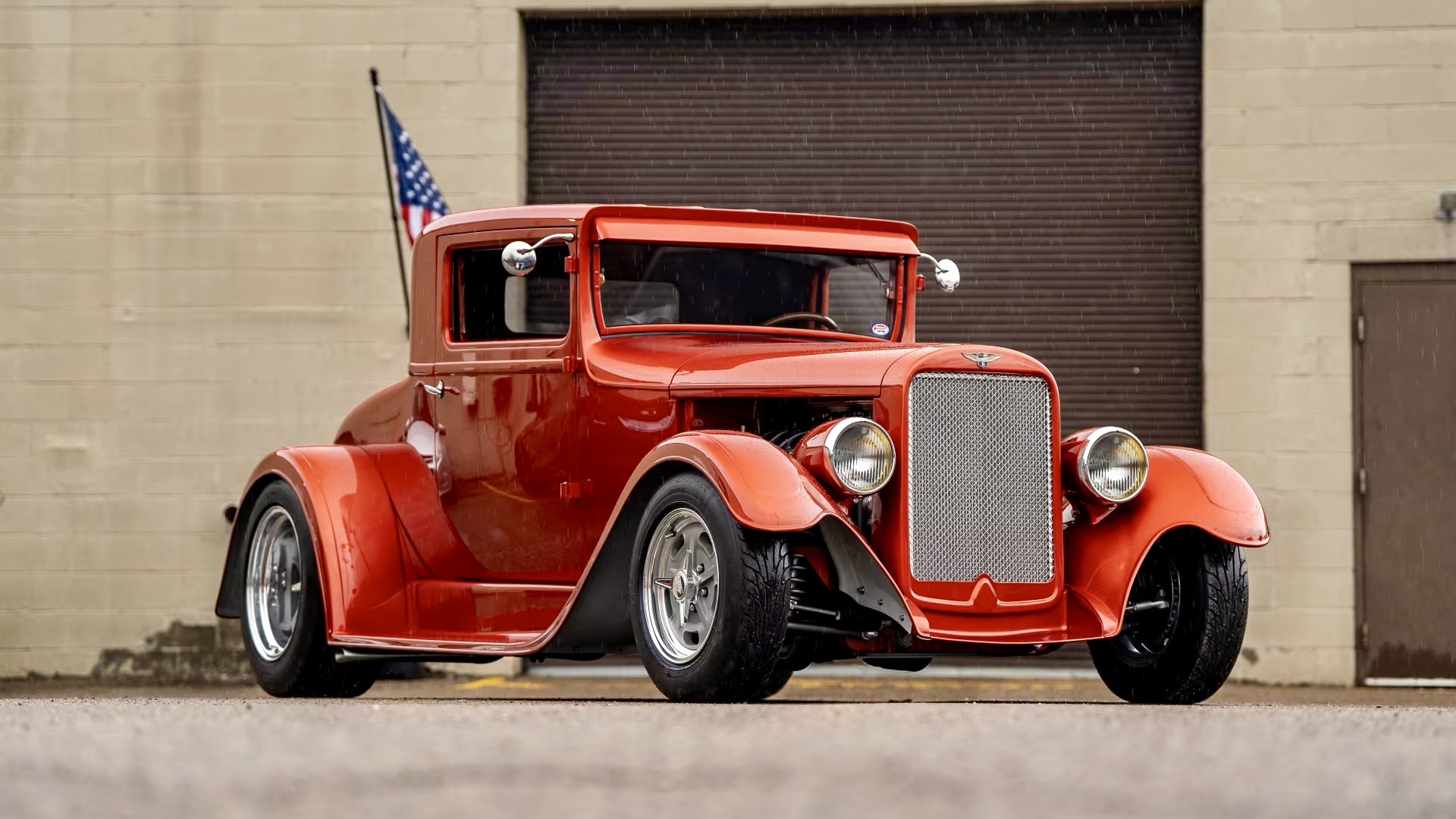
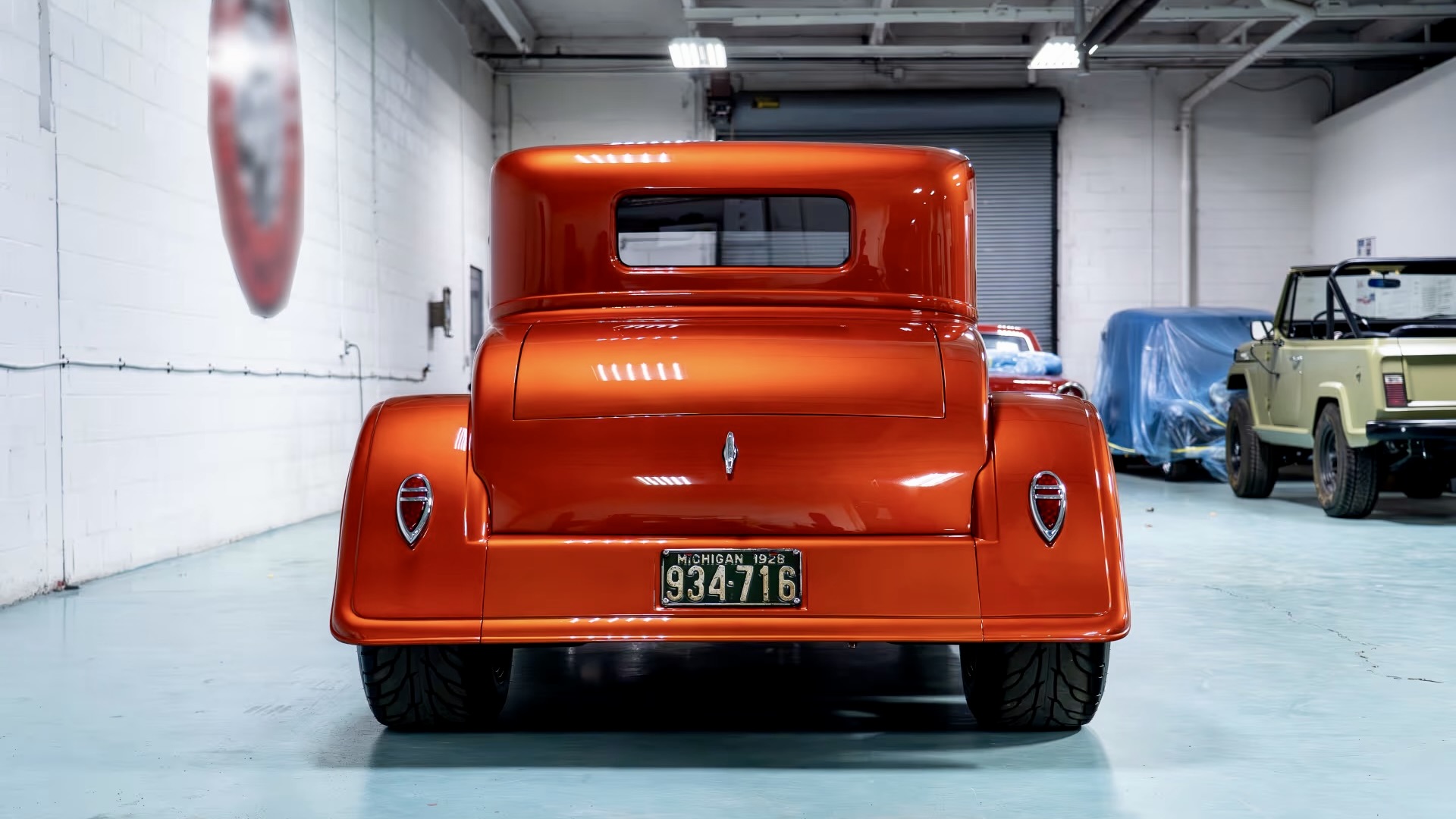
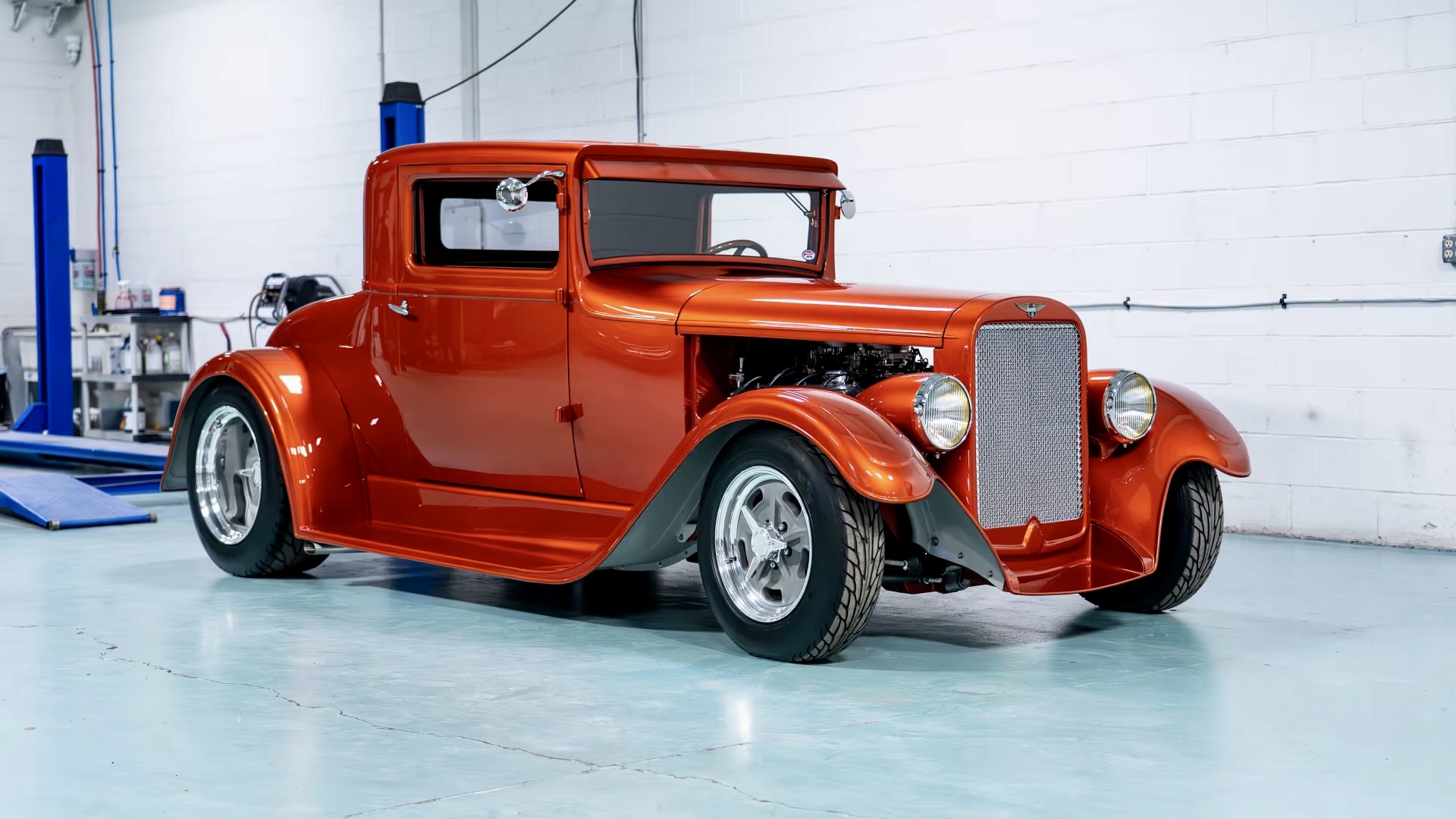
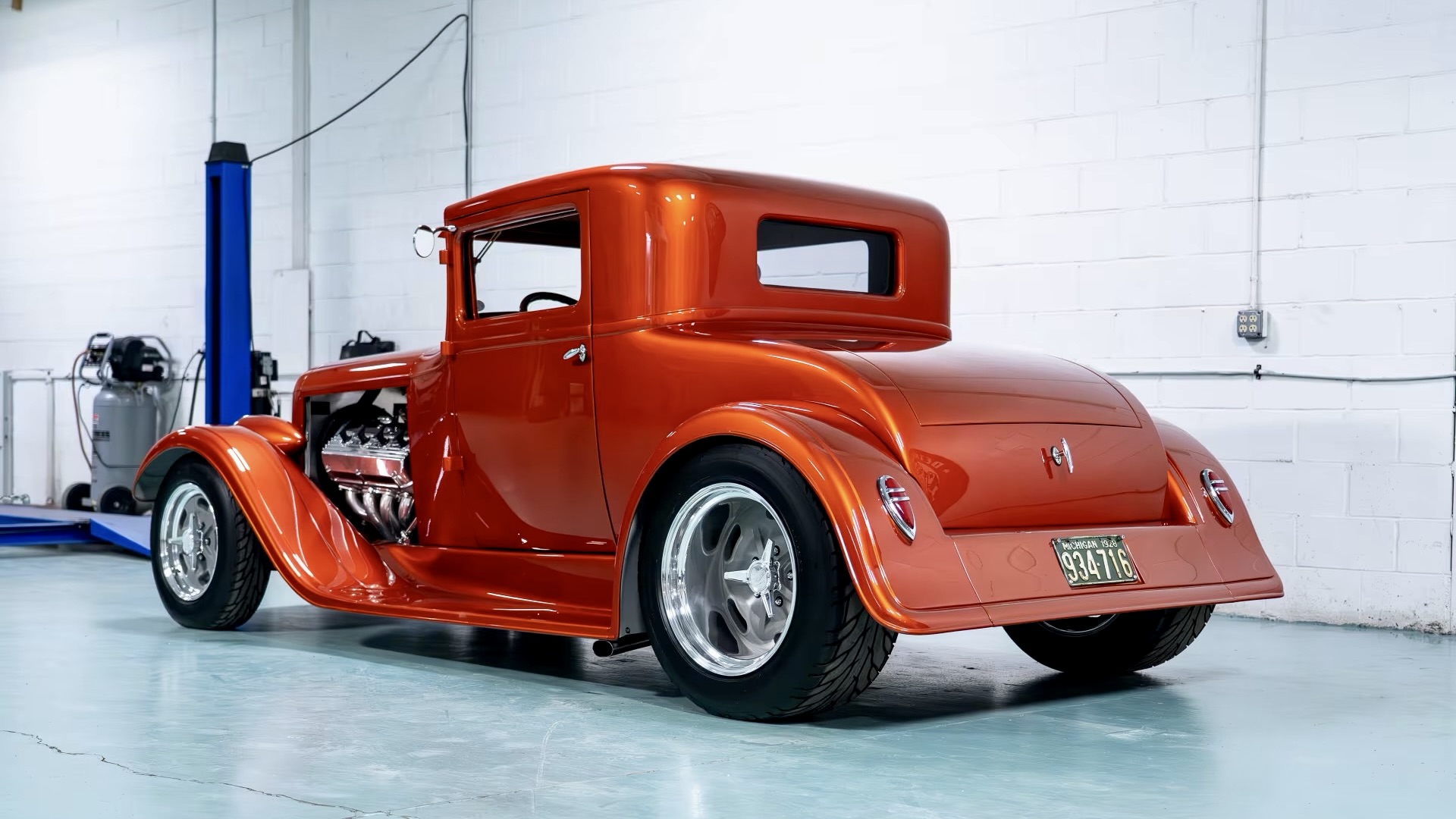
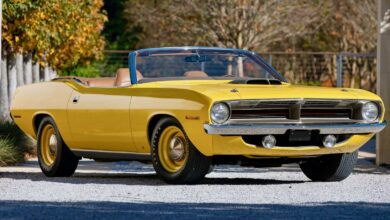
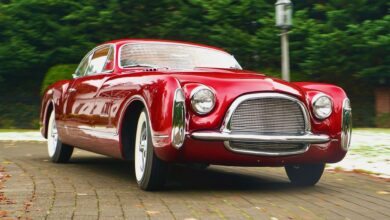
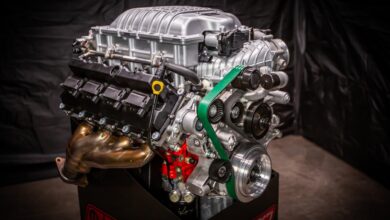
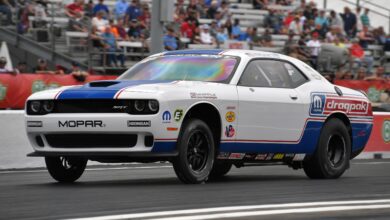
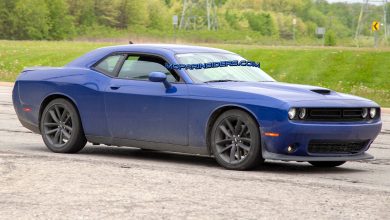
No replies yet
Loading new replies...
Join the full discussion at the Mopar Insiders Forum →